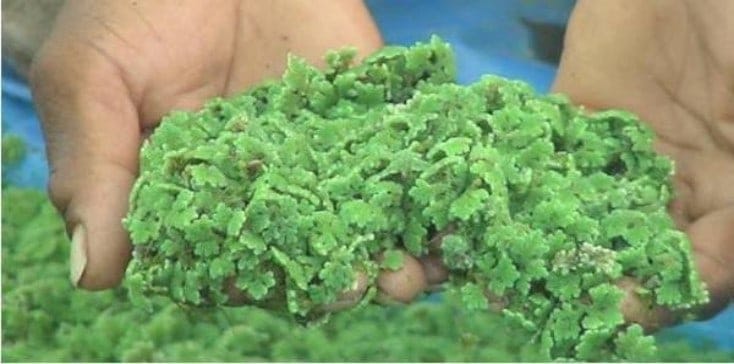
Azolla Feeding to Cattle : Economic Value or a Hype
At times we scientists and extension workers get carried away and do not analyze the utility of farm technologies in a pragmatic way. This problem accentuates when the campaign becomes blind activism and implemented to achieve performance targets. In such situations we fail to consider the appropriateness of the technologies, cost, ease, are forgotten. A recent boom to spread Azolla Feeding to Cattle is an example of a discussion in this blog. There are claims that Azolla can be an alternate to fodder feeding. Second, its feeding will result in less concentrate intake hence less feeding cost. We will examine these claims using evidence in the published literature.
Azolla Feeding to Cattle is an old and Abandoned Technology
First, Azolla is not a new technology, It was adopted in the 1990s. Countries such as China, Japan, Philippines adopted Azolla as an intercrop with rice but abandoned rapidly. It is apparent that while introducing Azolla in India several crucial facts were not properly considered.

Azolla can’t replace fodder
The value of a feed/fodder or supplements must be judged on the basis of nutrient contents. The first consideration is dry matter content which reflects nutrient density in the feed. Minus dry matter feed contains water that has no energy value. The other important considerations are protein and metabolizable energy contents, on a dry matter basis. The last but most important is the cost per kg of DM. It is reported that maximum yield from a pond of 24 square feet size is around one kg per day.

In the above table, I have described a comparison of Azolla important nutrient values with cottonseed cake, silage, and sorghum straw. These nutritional values have been drawn from www. Feedipedia.org. In Azolla dry matter content is 6.7% which is extremely low compared to other common feeds. Thus, one kg Azolla per day will yield only 67 g nutrients. In comparison, feeding off one kg silage will yield 235 g nutrients. To replace 50% fodder or silage a farmer must feed 50 kg Azolla per cow. For each cow, he will have to construct 1200 square feet ponds. Thus, Azolla can’t be recommended as a replacement for feed or fodder.
Can Azolla be fed as ‘supplement’?:
I have compared nutritive values on a DM basis with other feed ingredients. I have considered the quantity of each ingredient to supply DM equal to one kg Azolla. For the cake, compound feed and straw the equivalent values are 72-73 g. In case of silage equal DM will be available from 285 g. One kg Azolla will supply only 14 g protein whereas 285 g silage will provide more than 28 g. Contrary to claims, therefore, Azolla is also not a good protein supplement. The real value of a feed ingredient is scored on the basis of ME supplied per g or kg. Even on this score, Azolla appears to be very poor, equal to 72 g sorghum straw. Rather 285 g silage will supply 5-times higher ME than one kg Azolla. From the data presented it is clear that it can’t even be regarded as an energy supplement.
Ease of Cultivation
We should also compare ease-of-cultivation as an important factor. The published papers suggest that Azolla is temperature and humidity- sensitive. During dry summer months, it turns brown, and yield may drop down to 50%. In many parts of India, 3-4 summer months are quite hot and dry hence not suitable for its cultivation. Azolla cultivation is labor-intensive because every week dung and superphosphate should be mixed in the pond. Secondly, every 3 -4 months the soil and water from the pond require changing. Lastly, the landless dairy or small-hold farmers may not be able to afford even 100 square feet pond to support the feeding of 2-3 cows. There is no point supplementing a few g DM in 12-14 kg DM to be supplied to an adult cow. Such a low DM availability would hardly make any difference to overall feed value.
Azolla, however, could be a good feed supplement if it is cultivated in natural water bodies. Since such water bodies are large hence yield will also be higher and the labor requirements for changing soil and water will not be there. Secondly, in many countries, it was adapted as an intercrop with rice. Hence in rice-growing areas, this technology can be popularized.
Conclusion
From the data provided it is clear that Azolla feeding to cattle has several constraints and the technology is not suitable for all kinds of farmers. At best, this technology should be extended to farmers who have access to natural water bodies or rice cultivators.
Please also read the blog on the Azolla Cultivation
